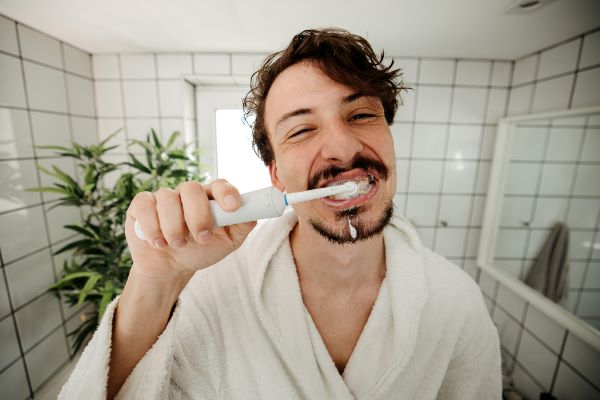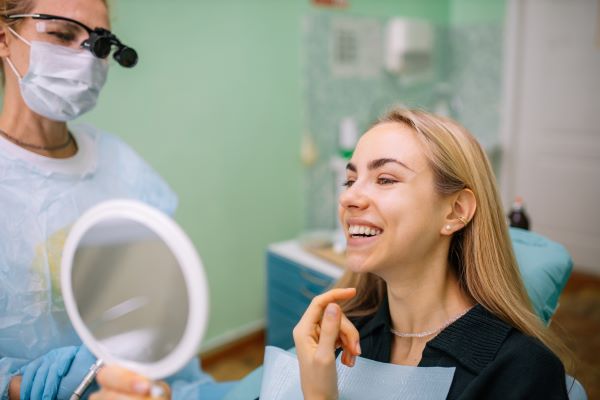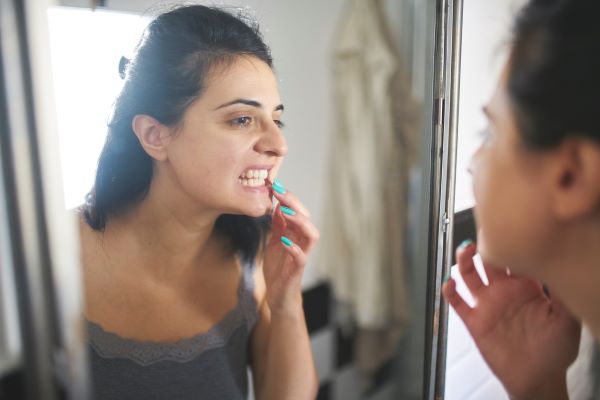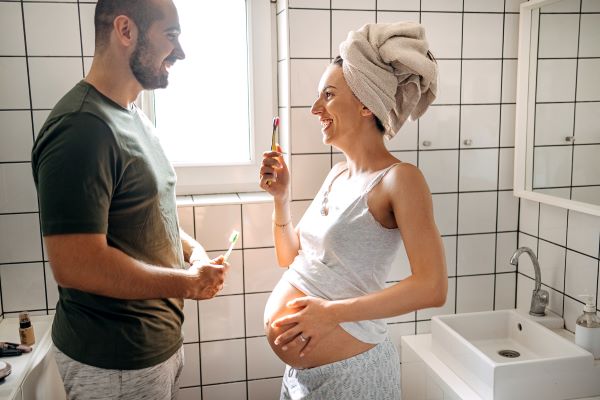Nothing beats that just-brushed feeling. Minty fresh, smooth finish, not a trace of plaque to be found. Many of us learn the importance of cleaning our teeth from a young age – but are you sure you’re doing it correctly?
You may skip brushing your teeth once in a while or your dentist may look at you exasperatedly at the mention of flossing. But what about over-brushing? Is it possible to clean your teeth too hard or too much?
Brush up on these brushing technique tips to keep your dental health in check and ensure your smile stays shiny.
Why is it important to brush your teeth?
Brushing helps to remove plaque that has built up on your teeth. Plaque is a layer of bacteria that sticks to your teeth, which can cause that unpleasant fuzzy feeling if you haven’t brushed in a while.
Removing plaque by brushing regularly helps keep your teeth and gums healthy.
Signs and risks of overbrushing
It is possible to overbrush your teeth by pressing too firmly with your toothbrush. Brushing too hard can wear away your enamel – the hard, protective layer on the outside of your teeth – and irritate your delicate gum tissue.
A common sign that you may be brushing too hard is if your toothbrush bristles become worn quickly. If the bristles are flattened or spread apart, they won’t do a good job of cleaning your teeth.
If you brush your teeth too harshly over time, you can encourage gum recession or erode your enamel, which may cause tooth sensitivity – so try to go softly!
How long should I brush my teeth?
The Australian Dental Association recommends brushing your teeth for two minutes, twice a day. Happy brushing!
Click the video to watch
Brushing tips
With that in mind, let’s see how you can get the best clean, according to dentists.
How long and often?
The Australian Dental Association recommends brushing your teeth for two minutes twice a day.
One way to keep track of timing is to brush in each corner of your mouth for 30 seconds. You can also use a timer or even play a two-minute song or use a dedicated toothbrushing app. Some electric toothbrushes will buzz at the two-minute mark, as a handy way to help you keep track of time.
It’s also best to avoid brushing straight after eating or drinking, especially sugary or acidic food or drinks. Wait at least 60 minutes after eating before you brush.
Toothbrush type
A soft-bristled toothbrush brush is ideal. This helps prevent you from brushing your teeth too hard and protects your sensitive gum tissue.
You can use either a manual or electric toothbrush. Studies have shown there are benefits to electric brushes, such as removing bacteria and decreasing gum inflammation more effectively than manual brushes. Manual brushes will still get the job done, though – as long as you use the right technique.
It's a good idea to replace your toothbrush or brush head every three months.
Technique
If using a manual brush, gently brush small circles over your teeth and along your gum line. Make sure you brush each tooth on its front, back and top.
If going electric, guide the brush slowly across your teeth, pausing for a few seconds at each one. Remember, there’s no need to press too hard.
Toothpaste
How much toothpaste do you really need to use? For adults and children over three, it’s recommended you use a ‘pea-sized’ amount each time you brush your teeth. For younger children, aged from 18 months to three years, it’s best to use a smaller ‘smear’.
Opt for toothpaste containing fluoride, as this will help strengthen and protect your teeth.
Flossing
Don’t forget about flossing! Toothbrush bristles can’t reach the insides of your teeth, so you’ll need to pick up the floss to get into these hard-to-reach spaces. It is recommended you floss once a day.
Not doing so can lead to gum disease or increase your risk of tooth decay.
Should you see your dentist for cleaning?
Your dentist can give your teeth a professional clean at a standard check-up appointment. As well as removing plaque, they will also clean calculus (sometimes called tartar), which can’t be removed by regular brushing.
You can make sure you get a good clean by seeing your dentist every six or 12 months. This, combined with your regular home brushing routine, will help keep your dental health top notch.
READ MORE: How often should you get your teeth cleaned?

Teeth. You’d literally suck without them.
Our 100% back on dental check-ups are just one of the ways you can get great value from our extras covers. Learn more about how extras cover can help you take control of your health & wellbeing.





